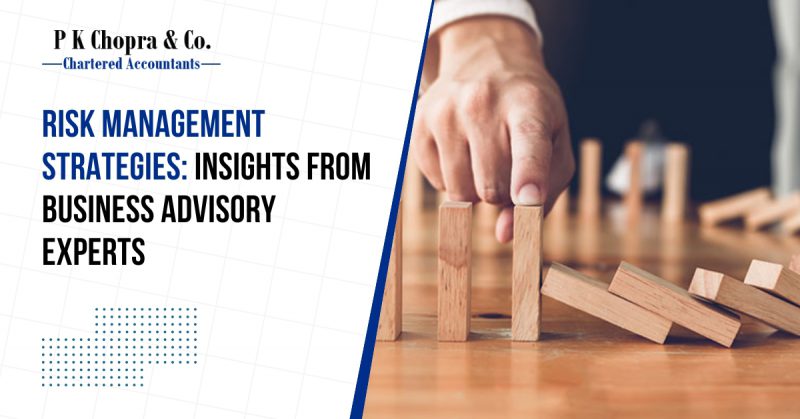Risk Management Strategies: Insights from Business Advisory Experts
In the ever-evolving landscape of modern business, risk management stands out as a crucial element for sustaining success. From market fluctuations to cyber threats, the potential risks facing businesses today are vast and varied. Proactively identifying, assessing, and managing these risks is vital for any organization aiming to safeguard its assets, reputation, and future growth. Drawing on insights from business advisory experts, this article delves into key risk management strategies that organizations can employ to navigate uncertainties effectively.
1. Risk Identification and Assessment
The first step in risk management is identifying potential risks. This process involves analyzing various facets of the business environment, including internal operations, external market conditions, regulatory changes, and technological advancements. Business advisory experts recommend conducting regular risk assessments to stay ahead of emerging threats. Techniques such as SWOT analysis (Strengths, Weaknesses, Opportunities, Threats) and PESTLE analysis (Political, Economic, Social, Technological, Legal, Environmental) can be instrumental in identifying and categorizing risks.
2. Risk Prioritization
Not all risks are created equal; some pose a greater threat to an organization than others. Prioritizing risks based on their potential impact and likelihood of occurrence allows businesses to allocate resources efficiently. Risk prioritization helps organizations focus on high-impact risks that could significantly disrupt operations or harm the company’s reputation. This approach ensures that the most critical risks are addressed promptly, minimizing potential damage.
3. Developing a Risk Management Plan
A comprehensive risk management plan outlines how an organization will handle identified risks. This plan should include risk mitigation strategies, contingency plans, and procedures for risk monitoring and review. Business advisory experts emphasize the importance of tailoring the risk management plan to the specific needs of the organization, considering factors such as industry, size, and market conditions. A well-defined plan not only prepares the business to handle crises but also enhances resilience.
4. Implementing Risk Controls
Risk controls are measures put in place to prevent, reduce, or mitigate identified risks. These can include policies, procedures, physical safeguards, and technological solutions. For example, in the realm of cybersecurity, implementing firewalls, encryption, and regular security audits can protect against data breaches. In financial management, internal controls such as regular audits and separation of duties can reduce the risk of fraud. By implementing appropriate risk controls, businesses can reduce their vulnerability to threats.
5. Continuous Monitoring and Review
Risk management is not a one-time activity but an ongoing process. Continuous monitoring allows organizations to stay alert to new risks and evaluate the effectiveness of existing controls. Regular reviews of the risk management plan ensure that it remains relevant and effective in a changing business environment. Business advisory experts recommend establishing a risk management committee responsible for ongoing risk assessment and reporting. This proactive approach helps organizations adapt to new challenges and maintain a robust risk management framework.
6. Employee Training and Awareness
Employees play a critical role in risk management. Training staff on recognizing potential risks and responding appropriately is essential for a successful risk management strategy. Regular training sessions and awareness programs can educate employees about the importance of risk management and their role in the process. By fostering a risk-aware culture, businesses can empower their workforce to act as the first line of defense against potential threats.
7. Leveraging Technology and Data Analytics
In today’s digital age, technology and data analytics have become indispensable tools in risk management. Advanced data analytics can provide valuable insights into emerging trends and potential risks, enabling businesses to make informed decisions. Technologies such as artificial intelligence (AI) and machine learning can automate risk detection and response processes, increasing efficiency and accuracy. By leveraging technology, businesses can enhance their ability to identify, assess, and manage risks effectively.
8. Establishing a Crisis Management Plan
Despite the best risk management efforts, some risks may still materialize. Having a crisis management plan in place is crucial for responding to unforeseen events quickly and effectively. This plan should outline roles and responsibilities, communication protocols, and steps to take in the event of a crisis. Business advisory experts highlight the importance of conducting regular crisis simulations to test the plan’s effectiveness and ensure that employees are familiar with their roles during an emergency.
9. Insurance as a Risk Transfer Mechanism
While not a substitute for proactive risk management, insurance can serve as a vital risk transfer mechanism. By transferring certain risks to insurance companies, businesses can protect themselves from financial losses resulting from unforeseen events. Business advisory experts recommend evaluating insurance coverage regularly to ensure it aligns with the organization’s risk profile and adequately covers potential threats.
10. Building a Resilient Organizational Culture
Lastly, fostering a culture of resilience is essential for effective risk management. A resilient organization is not only prepared to face risks but can also adapt and thrive in the face of adversity. Building resilience involves promoting agility, encouraging innovation, and empowering employees to take calculated risks. By embedding resilience into the organizational culture, businesses can enhance their ability to respond to challenges and seize opportunities.
Conclusion
Risk management is a dynamic and continuous process that requires vigilance, adaptability, and a proactive approach. By implementing these strategies, organizations can navigate uncertainties, protect their assets, and secure their long-term success. Business advisory experts underscore the importance of integrating risk management into the core of business operations and fostering a culture of risk awareness and resilience. In a world where risks are ever-present, effective risk management is not just a necessity but a competitive advantage.

